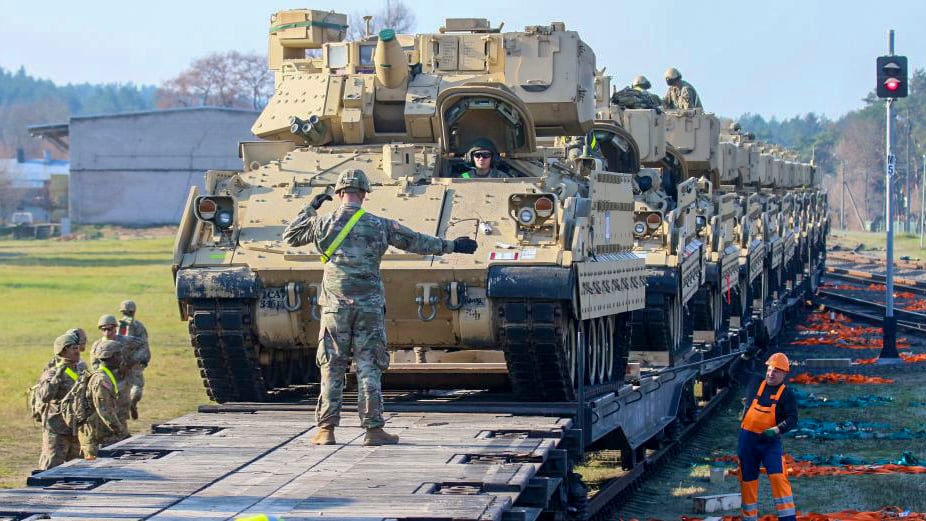If the Army got into a large-scale war, it has only one unit of its own to run all rail operations — the 757th Expeditionary Rail Center. But rail support has already been flagging in peacetime, according to a new Government Accountability Office report.
More than two-thirds of Army equipment is moved by rail to port for shipment overseas. Once it arrives, especially in Europe, it’s often continuing via rail, as well.
But in 2015, the Army cut the 757th ERC from 600 soldiers down to 180, instead relying on civilian employees to pick up the rest of the work. That might not have been the best move.
“The remaining crews have been in high demand and Army officials said it is unclear what would happen in a large mobilization,” the GAO report reads.
RELATED

Making matters worse, about half of the tracks used to move all that gear by rail have been “closed due to defects,” inspectors said. Additionally, four of 60 installations had not met, or have not even scheduled, their five-year ultrasonic inspection timeline standard set by the Army, according to the report.
The Army also “doesn’t have an overall program to ensure that tracks are inspected and deficiencies corrected,” according to the report.
The 757th ERC’s main job is in its title — moving Army equipment around by rail in an “expeditionary” setting, such as in Europe to counter any actions by Russia on NATO’s eastern flank.
While it’s not the 757th ERC’s official job, the unit also provides rail operating crews in the continental United States, or CONUS, as a “stopgap measure,” Army officials told investigators. In 2018, the demand for the 757th ERC’s crew in CONUS “occurred frequently and regularly.”
A 2020 Army study also evaluated rail assets, such as how many trains had to be used to meet requirements. But the study did not determine how many rail operating crews would be necessary for a large-scale mobilization, according to the GAO report. And those rail lines need a look.
The GAO made three recommendations to address the problems, all of which fall to Army Materiel Command:
- Secretary of the Army should ensure that AMC sets a requirement for trained rail operating crews in case of a large mobilization. The AMC commander should then compare the requirement to their existing capability, especially at key CONUS installations.
- Secretary of the Army should also ensure that AMC “analyzes and quantifies” the risk associated with the number of trained rail operating crews required and available to support a large mobilization then take actions to mitigate that risk.
- Secretary of the Army should ensure that the AMC commander require a quality assurance program for oversight of the conditions of the Army rail track and implement the program. At a minimum, the program should cause the “timely and complete” inspection of rail track, use of waivers for track use, tracking and monitoring repairs, prioritizing rail improvement efforts and periodic reporting of updated track conditions to decision makers.
The report was provided to the secretary of the Army. It was published for public viewing on Aug. 23.
As of Monday, all three recommendations listed online remained open and did not include responses from the Army.
Todd South has written about crime, courts, government and the military for multiple publications since 2004 and was named a 2014 Pulitzer finalist for a co-written project on witness intimidation. Todd is a Marine veteran of the Iraq War.





